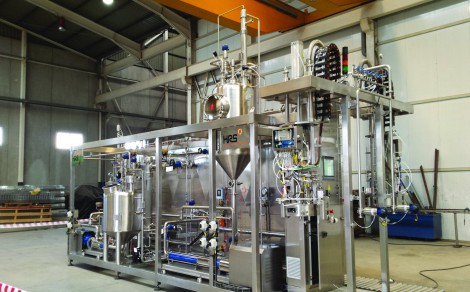- Home » Editorial » Hydraulics
The advantages of cold aseptic filling

3. Sterilisation of the packaging
Prior to filling, packaging is normally sterilised using thermal or chemical methods (such as peroxyactic acid or hydrogen peroxide), although in many production environments the packaging is supplied pre-sterilised in aseptic packaging that can be put into the filling line without contamination. However the packaging is sterilised, it is vital that aseptic conditions are maintained between sterilisation and sealing, and this is another reason for adopting an integrated aseptic processing solution.
4. Filling and sealing under aseptic conditions
There are numerous systems of aseptic filler on the market, but all try to balance speed, accuracy of operation and flexibility of filling (for example, working with different products and containers), while maintaining the microbial integrity of the product and the sterility of the containers – including suitable cleaning-in-place (CIP) systems before, during and after production.
Depending on the product and how it is packaged, filling may be based on weight or volume and appropriate sensors (such as weigh cells of flow meters) and control systems will be included in the filler machinery. The AF Series of aseptic fillers meets all of these criteria and is suitable for both high and low acidity products.
Once filled, there are many ways that aseptic packaging can be sealed; from screw-capping bottles to heat sealing pouches or putting lids on bulk containers. These mechanisms may also include some form of tamper-evident system to alert customers or consumers if the pack has been opened since filling.
The business case for aseptic filling
There is of course a financial investment required to install aseptic filling technology, but when conducting a cost/benefit analysis, some of the factors to consider include:
- Volume: Aseptic filling lines normally operate on a continuous basis and therefore are much faster than batch cooling operations.
- Quality: Probably the biggest driver towards aseptic filling is the improvement in product quality. Any heat treatments can be driven by product requirements, rather than the need to sterilise the container, making high temperature, short time (HTST) pasteurisation feasible in many cases. This preserves key quality characteristics such as taste, nutrient content and colour.
- Flexibility: Most aseptic filling lines can be configured to supply a range of products and fill a range of containers including PET, HDPE, LDPE, glass, cans, foil etc. Not only does this increase flexibility, but also helps to future-proof installations.
- Packaging: Although there may be an increase in costs associated with the need to purchase sterile packaging, many packaging types used in aseptic filling are generally lighter (and therefore cheaper) than their hot-fill equivalents.
When considering aseptic filling, companies need to weigh up the safety of the proposed solution with capital and operating costs, operational safety considerations and the effect on product quality. In most situations, the business case to adopt cold filling quickly becomes apparent.
-
PPMA 2025
23 September, 2025, 9:30 - 25 September, 2025, 16:00
NEC, Birmingham UK -
Advanced Engineering Show 2025
29 October, 2025, 9:00 - 30 October, 2025, 16:00
NEC, Birmingham UK










